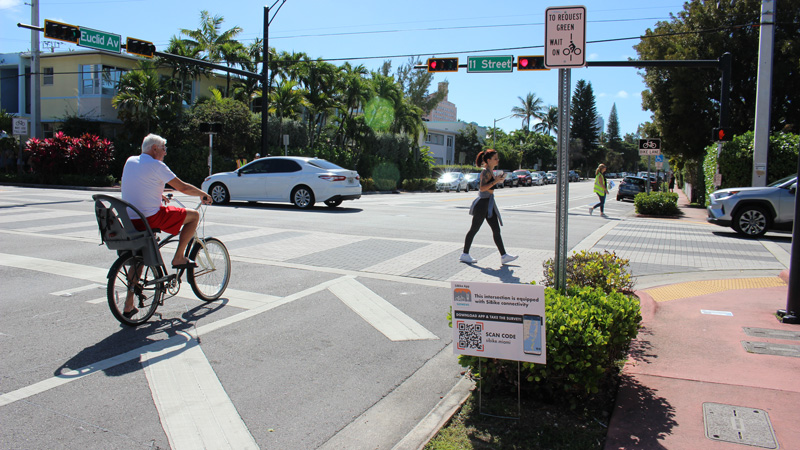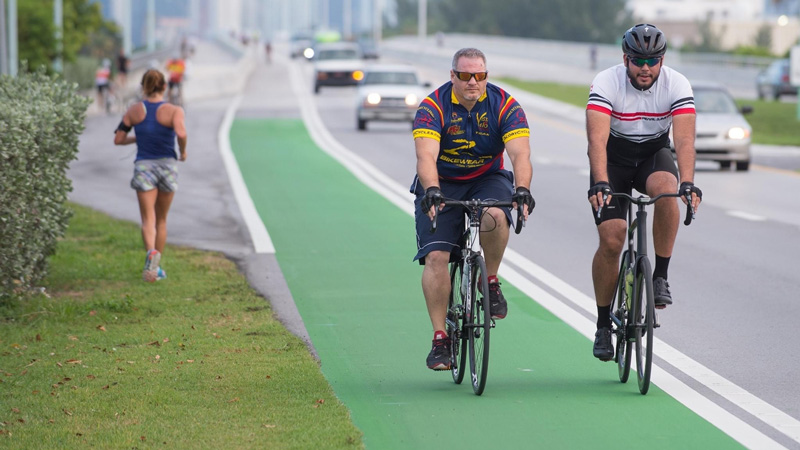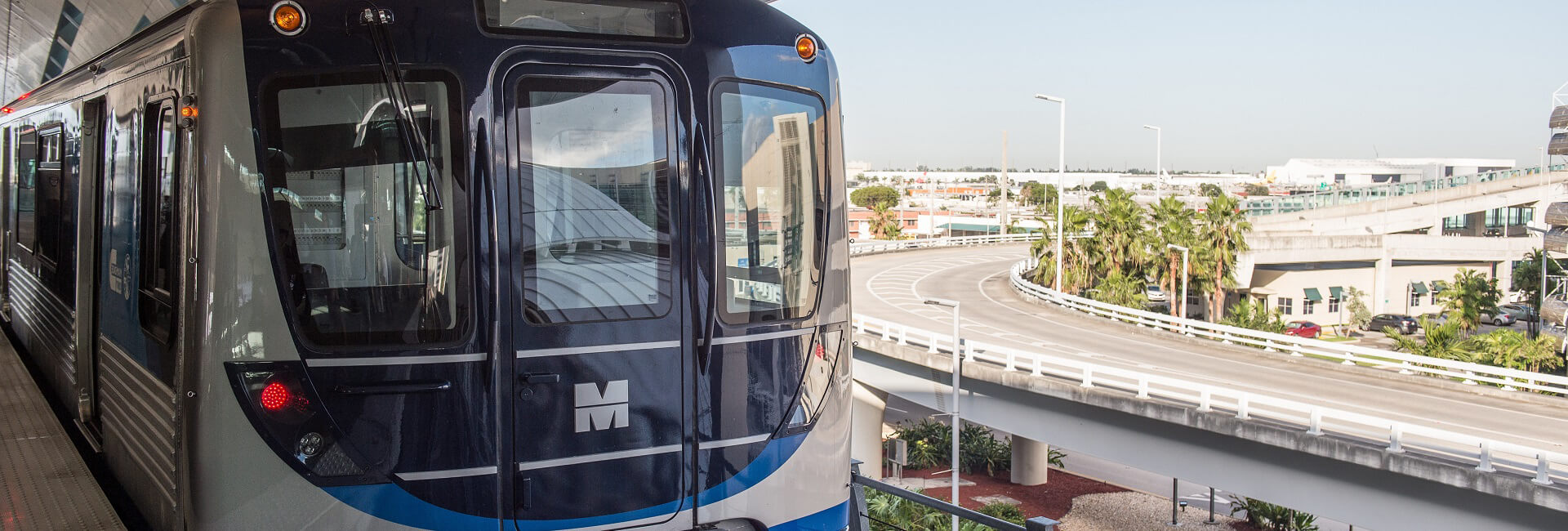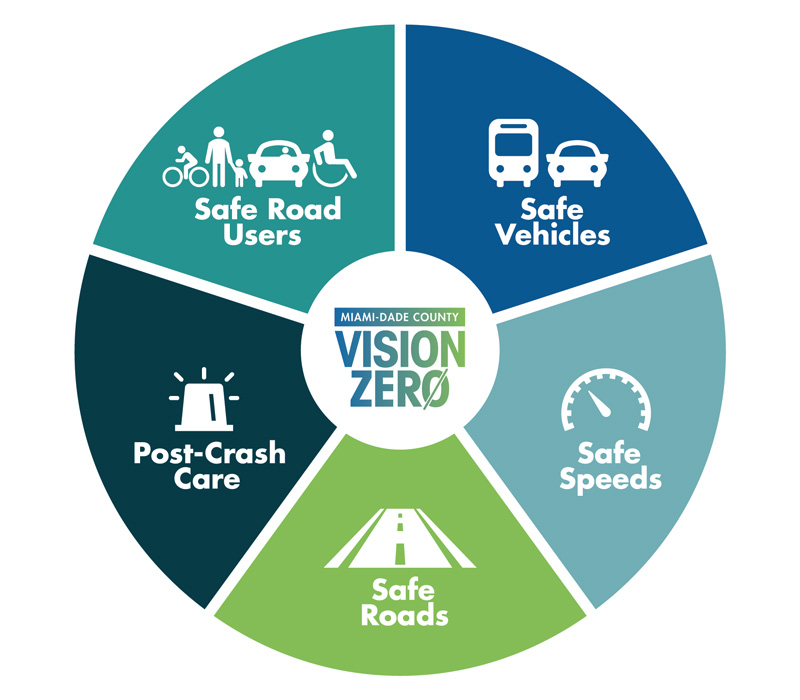Vision Zero
With funding from the National Safety Council’s Road to Zero Community Traffic Safety Grant, Miami-Dade County developed a Vision Zero Data Dashboard. The dashboard provides easily understandable and transparent benchmarking to monitor progress toward achieving the County's Vision Zero objectives.



What is Vision Zero?
Vision Zero is a comprehensive strategy built around the guiding principle that even one death on our transportation system is unacceptable. Developed in Sweden in 1997, this strategy has proven successful in multiple communities across the world.
Miami-Dade County’s Vision Zero initiative:
- Started in 2018 with the publication of the County's first Vision Zero Plan by the Miami-Dade Transportation Planning Organization.
- In 2021, Miami-Dade County Mayor Daniella Levine Cava, and the County Commission, formally established the Vision Zero Program.
- In 2021, the Vision Zero Framework Plan was developed.
Each year, there are more than 300 fatalities on Miami-Dade County roads, and hundreds more are severely injured. For too long, these tragic events were thought of as inevitable. As such, achieving Vision Zero requires a paradigm shift to embrace the thought that crashes should not result in deaths or serious injuries, and we all share responsibility in achieving our vision.
Only together can we achieve Vision Zero. Take the first step by sharing your experience on Miami-Dade County’s roads.
Learn more
- 2024 Vision Zero Action Plan
- Vision Zero Executive Summary Packet; available in Spanish and Creole
- Vision Zero Framework Plan
- Fact Sheet; available in Spanish and Creole
Get Involved
Contact Us
Stay Connected
Sign up to receive updates
Transportation and Public Works
Stacy L. Miller, P.E.
Overtown Transit Village North
701 NW 1st Court,
Suite 1700
Miami, FL 33136
786-469-5675

